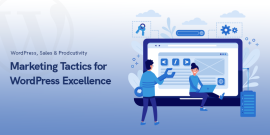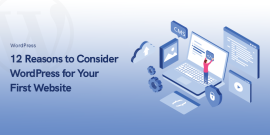Creating A Faster, Quicker Website – Where Should You Begin From?
Okay, I’ll say it, right here, right now – nothing else is as frustrating as a slow website.
I mean, imagine this – you’re looking for some information about your health, and the site you’re referring to is loading, loading, and loading. How would you feel?
Well, if I was you, I’d probably leave the website as soon as possible.
And this is how 70% of people on the internet think as well.
They’ll simply avoid buying anything from your website if it doesn’t open quickly. To make the matter even worse, it can also lead to a 16% decrease in your customer satisfaction.
Therefore, it’s a must that you improve your web platform’s speed from the core. There’s no getting around it at all.
Website Speed And Conversion Rate – The Connection!
As I’ve already said before, having a slow website can kill your conversion rate. And, once it starts degrading, there’s no way you can recover from it.
When opening your webpage, almost 47% of consumers will expect it to load within two secs or less. And unfortunately, almost 40% of them will simply abandon your site if it takes a bit more than three seconds to open.
So, you’ll lose a few of your potential consumers then and there.
On top of that, people leaving your website can also increase its bounce rate by a mile. It, in turn, will affect your ranking on Google. And the lower you rank, the lesser your conversion rate will be. It’s as simple as that.
But, Why Is My Website Slow?
I feel like this is something almost every website owner thinks whenever they find a problem with their website speed.
Many people think it’s happening because of some obsolete on-page site-related reasons, while others put the blame on their hosting.
Funnily enough, both of them are right. But that’s not where it ends, though. A website can get slow for more than one reason. Here’s what you need to know about them.
- Having too many unoptimized images.
- The problems with JavaScript.
- Containing a massive amount of flash content.
- Getting excessive HTTP requests.
- Not making proper use of caching techniques.
Apart from these, sometimes, having too many advertisements can also negatively impact the speed of the website. So, be careful about how and where you place your ads.
So, How Do I Begin Optimizing My Website?
When it comes to optimizing your site, you should always begin with the fundamental issue and build your way up from there. Here’s how you can start your journey.
Step – 1: Change Your Hosting Plan!
Okay, first things first.
Look at your website hosting plan and see if you’re happy with it or not. If you feel like you need to get out of your basic shared plan, look for a better option.
… Potentially something that can handle your data and web traffic flow efficiently. It’ll be a bit costlier, I know. But, doing so can improve your website speed by a mile.
Step – 2: Focus On Your Images!
Now, for the next part, I’ll ask you to focus on improving the imaging status of your website. Perform an audit, find out the unoptimized photos, and change it to something lightweight.
Here’s how you can do it –
- Compress the image a little to cope with a small data storage.
- Altering the resolution of the picture.
- Cropping out the unneeded areas in the photo.
You can make these changes pretty quickly in a free tool like Gimp or a premium one like the “great” Photoshop. It’ll take only a minute or two to be done with it.
Step – 3: Combine Your Files Or Minify Them!
Sometimes, getting a humongous amount of HTTP requests can decrease your site’s overall loading speed by almost 80%. Why, though?
Well, when someone opens your website, it starts downloading the stylesheets, images, and scripts from within. And this, in turn, can make it difficult for the browser to load your site.
So, what’s the solution? Combine and minify, simple.
Minifying a file usually involves removing unnecessary code, formatting, and whitespace.
On the other hand, combining is all about taking your JavaScript and CSS files and getting them all into a single place. This will make it easier for your website to download everything and load much quicker than before.
Step – 4: Don’t Use Too Many Plugins.
If you’re a WordPress website owner, you probably already know about what a plugin is. But I’ll still touch on the subject here, in case you’ve forgotten about it.
A plugin, in essence, is a type of tool that can improve the functionality of your website. For example, you can use them to –
- Change the coloring of the background and the whole website.
- Analyze your on-page content and see where the faults lie.
- Increase the efficiency of your navigation system.
But, there’s a catch. Although the plugins are pretty helpful, they can still make your website a lot heavier than usual. Hence, if you don’t use them too often, I’ll ask you to remove them from your database. This might increase your website’s speed and efficiency even more. Austin-based SEO Kyle Sanders recommends only using plugins that are regularly updated; “We see a lot of WordPress sites held together with droves of plugins that haven't been updated in years. Not only does this bloat the site, it creates site security issues which can result in hefty development bills to fix.”
Step – 5: Reduce The Number Of External Scripts.
You know the JavaScript snippets that you usually include to add an additional library or a feature to your website? Well, they make HTTP requests every time someone opens a new page. Hence, in some cases, they can slow down your website a little too.
Wait, let me give you an example or two of these scripts –
- The “like my page” box for Facebook.
- An icon set like “Font Awesome.”
- Disqus, or any other external commenting system.
- Bootstrap (especially if you’ve bought it via CDN).
- A lead-capture tool, like a pop-up box.
- Google Analytics or any other website analysis service.
Now, here’s the thing. I’m not really saying that you should avoid using these features from today onwards. However, just keep the usage of the same as minimal as possible. Install only those things that you exclusively need for your website and avoid the others entirely.
Making It Quicker Than Flash!
So, that’ll be all for this blog from me. Hopefully, I could convey as much information as you probably needed here. But, if I still missed out on something, don’t forget to let me know all about it in the comment section below. I’ll c
Recommended Posts

Marketing Tactics for WordPress Excellence in 2024
January 22, 2024

12 Reasons to Consider WordPress for Your First Website in 2024
January 17, 2024

Top 5 Website Design Trends for 2024
January 8, 2024